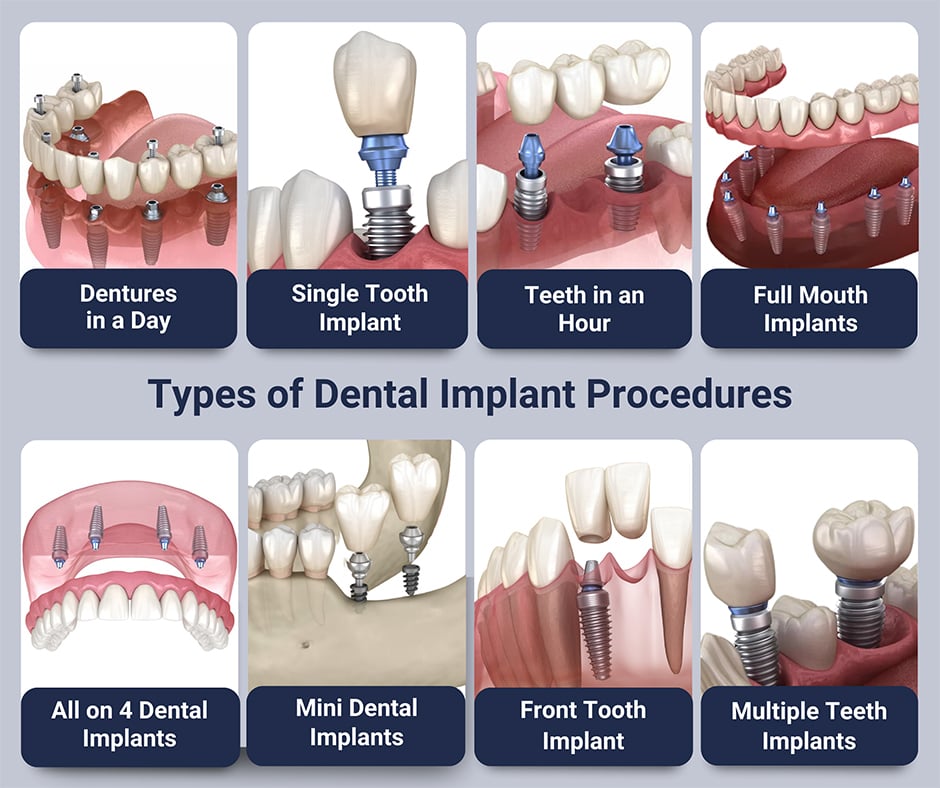Getting My Dental Sense To Work
Getting My Dental Sense To Work
Blog Article
Dental Sense for Dummies
Table of ContentsSome Known Facts About Dental Sense.The 7-Minute Rule for Dental SenseHow Dental Sense can Save You Time, Stress, and Money.The smart Trick of Dental Sense That Nobody is Talking About
are medical gadgets surgically implanted right into the jaw to recover a person's capacity to eat or their appearance. They offer assistance for synthetic (phony) teeth, such as crowns, bridges, or dentures. When a tooth is lost as a result of injury or condition, a person can experience issues such as rapid bone loss, malfunctioning speech, or adjustments to chewing patterns that result in pain.Oral dental implant systems include a dental implant body and dental implant abutment and may also consist of an abutment addiction screw. Kids dental. The oral implant body is surgically placed in the jawbone instead of the tooth's origin. The dental implant abutment is usually connected to the implant body by the joint addiction screw and extends with gum tissues right into the mouth to sustain the attached synthetic teeth
(https://www.openstreetmap.org/user/dentalsense1)Framework of The Oral Implant System selecting dental implants, talk to your dental copyright about the potential advantages and dangers, and whether you are a candidate for the treatment. Things to take into consideration: Your general health is an essential consider figuring out whether you are a good candidate for dental implants, how much time it will certainly require to recover, and just how long the dental implant may remain in area.
Cigarette smoking may affect the recovery process and reduce the long-term success of the dental implant. The healing procedure for the implant body might take a number of months or longer, during which time you typically have a short-term abutment instead of the tooth. the oral implant treatment: Thoroughly adhere to the dental health directions provided to you by your dental company.
A Biased View of Dental Sense
Implant failure can lead to the requirement for one more medical procedure to fix or change the dental implant system. Brings back the capacity to eat Brings back cosmetic appearance Aids keep the jawbone from shrinking due to bone loss Protects the health and wellness of the surrounding bone and gum tissues Aids maintain nearby (nearby) teeth stable Boosts top quality of life Damage to surrounding all-natural teeth throughout dental implant placement Injury to the surrounding tissues during surgical procedure, such as sinus perforation Injury throughout surgery (as an example, fracture of surrounding jawbone) Insufficient feature, such as seeming like the teeth do not bite together generally A feeling that the tooth is loosened or twisting in position resulting from an abutment screw loosening Implant body failing (looseness of the dental implant body) due to systemic infection, which might be more probable in people with unchecked diabetics issues due to local infection in bone and periodontals supporting the implant body as a result of postponed recovery, which might be most likely in patients that smoke Difficulty cleaning up the gum tissues around the implant, leading to inadequate dental health Without treatment periodontal condition Post-surgical feeling numb because of nerve impingement or damage Constantly alert health care carriers and imaging professionals that you have oral implants before any kind of magnetic resonance imaging (MRI) or x-ray treatments.
FDA is not knowledgeable about any kind of negative occasions reported for MRI or x-ray procedures with dental implants. Dental implants systems are typically made of materials that adhere to worldwide agreement requirements of the International Company for Standardization (ISO) or ASTM International. These criteria have details of what makes a secure material.

An oral implant is a structure that changes a missing out on tooth. With screw-like devices, the doctor inserts an implant right into the jawbone, and it acts as an anchor for a synthetic tooth, called a crown.
How Dental Sense can Save You Time, Stress, and Money.
Some individuals are not eligible for oral implant surgical procedure. It is for dental doctors to operate individuals with: acute illnessuncontrollable metabolic diseasebone or soft tissue condition or infectionIf these issues are solved, a person can have the surgical treatment. In, oral specialists avoid running on individuals with: If individuals with any of the above undertake oral implant surgical treatment, there is a greater danger of the implant failing.

Oral dental implant surgical treatment is a see page customized procedure. It's not the exact same for everybody. The complying with provides a basic introduction of what you can expect your dental practitioner, oral cosmetic surgeon, periodontist or prosthodontist to do: Place the implant operatively. Provide you time to recover. Connect the blog post and last crown, bridge or denture.
Next off, your doctor will meticulously put the dental implant into your jaw. Your specialist will rearrange your periodontals and shut the incision with stitches. If your implant is near the front of your mouth, your dental practitioner will certainly make a momentary tooth for you to use up until you recover. By doing this, you won't have a gap in your smile while you recoup.
Some Known Factual Statements About Dental Sense
During the healing stage, your jawbone should fuse to the dental implant. This process can take anywhere from 3 to nine months.
Once your dental implant heals, your dental practitioner can affix the abutment (small connector message) and your final repair (crown, bridge or denture). This usually takes about one hour to complete and may call for a second minor surgical procedure. You shouldn't really feel any kind of pain during your oral implant treatment since your provider will make use of drug to numb your periodontals.
Report this page